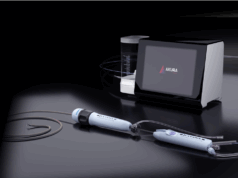
It goes without saying that every physician who performs mechanical thrombectomy in the treatment of acute ischaemic stroke must be well trained and has to fulfill certain qualification requirements, writes Klaus Hausegger.
Last year, five prospective randomised trials demonstrated the benefit of endovascular treatment of patients suffering from acute ischaemic stroke due to large intracranial vessel occlusion. These trials provide the highest level of scientific evidence that endovascular treatment is superior to intravenous thrombolysis in the anterior circulation. Subsequently, a multisociety consensus statement on mechanical thrombectomy in acute ischaemic stroke was recently published. This document has been drafted by numerous scientific societies involved in the field of invasive stroke management and has also recently been endorsed by CIRSE. The bottom line of this consensus statement is that endovascular therapy should be the first line treatment in eligible patients with acute ischaemic stroke.
As a consequence of this dramatic development, the number of acute stroke interventions performed has increased significantly in most comprehensive stroke centres. This has been accompanied by a growing demand for the provision of endoluminal service. In some European areas and/or countries, such as Germany, which have well-developed neuroradiological and neurointerventional structures, this increasing demand can be met. However, in other areas which are less developed with regard to neuroradiological infrastructure and processes, there is a shortage of well-trained stroke interventionalists and also well-structured comprehensive stroke centres which provide a 24/7 full service. This is evident.
Therefore, for the benefit of our patients, it is necessary to increase the number of well-educated and trained stroke interventionalists and also to improve the infrastructure, where necessary. However, this does not mean that there should be an unlimited access to the intraarterial stroke treatment for every physician, who estimates himself/herself capable of carrying out these procedures. It goes without saying that every physician, who performs such a procedure, must be well trained and has to fulfill certain qualification requirements.
In the meantime, several training guidelines have been set up. Not all societies follow the same pathway. However, there is general agreement, that the final standard of practice should be the same for every physician who performs transarterial stroke interventions. Even more importantly, this level of treatment expertise should hold good for every patient receiving intra-arterial stroke treatment. The establishment of a standardised training, education and also certification should be the goal of the next few years. To accomplish that, it will be necessary to define the infrastructure required by comprehensive stroke centres, where stroke interventions are taught. It will also be necessary to define a minimum case load per centre that is needed to be eligible to provide such education. Not all comprehensive stroke centres will, or indeed should, be teaching centres, but it will still be necessary to define the structures of those centres in order to maintain quality, and for economic reasons.
Although the recent studies have shed much light on the “grey zone” of transarterial stroke treatment, there are still many questions that remain unanswered: we still do not know what influence multimodal imaging should have on decision making for mechanical thrombectomy; we do not know what the best way of treating tandem lesions is; and, crucially, we still do not know whether it is justified to treat patients beyond a time window of six hours after symptom onset. In addition to the definitive demand for further randomised trials, which are already on the way, a large, ideally Europe-wide stroke database, into which all patients, who get endoluminal treatment, are entered, could serve as an enormous datapool, which could be used to answer some of these questions and also other questions that emerge.
Klaus Hausegger is head of the Department of Diagnostic and Interventional Radiology, Klinikum Klagenfurt, Klagenfurt, Austria. He is also the chair of the Cardiovascular and Interventional Radiological Society of Europe’s (CIRSE’s) Stroke Therapy Task Force. He has reported no disclosures pertaining to this article












